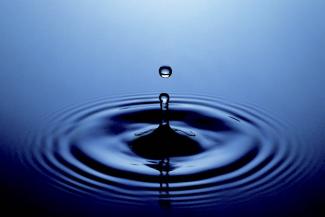Reminiscing World Water Day: Resolving Water Stress, Orissa Style!
This year, there are two days for the World Water Day celebration! On March 20, the UN observed it as the water day for unknown reasons but could be drawn out of the long weekend. In 1992, the UN General Assembly designated March 22 as ‘World Water Day’ to draw international attention to the critical need for safe drinking water worldwide. Today, the international inter-governmental agencies UN, UNEP, UNESCO, WMO, several funding institutions, multilateral development banks (MDBs) like the World Bank and Asian Development Bank (ADB) and millions of NGOs are celebrating yet another year to demonstrate the solidarity of the need of the hour. The irony is that over 1 billion people worldwide lack clean, safe drinking water, and more than 2.6 billion lack adequate sanitation services. On the other hand, fresh water was privatised before the poor could access it. Do we need a single-day awareness program on the elixir of life?
It’s neither a big event nor an essential venue for the media attention. It is also not on the UN radar. But India is facing a real danger of drought. The number of districts affected by drought has been increasing in Orissa- a coastal state in India. Near the famous Gandhamardan Hill, a village called Marjayadapali of the Paikmal area in the Bargarh district of Orissa was reeling under misery. The resource bounty village was under the shadow of abject poverty due to successive chronic droughts. In the intense battle of survival, hopes are like a distant mirage. While drought is not considered under disaster mitigation in India, people took the initiative to face the challenge.
Bhagwati Majhi, a resident of Marjadapali village in the region, has spent more than 45 years of his 66 years fighting drought. Each year of drought has pushed his family further into an abyss of poverty. Along with that, hopes to survive have also faded. And the same fate is shared by most of the region’s population. It seemed nature had a design of destruction for them for ages. Every year, people migrate to different places for work. An unholy nexus of ecological degradation of the region and the collapse of traditional land and water management systems pushed the region out of regular agriculture. The area has an average annual rainfall of 1400 millimetres!
For the first time, Manav Adhikar Sewa Samiti (MASS), a non-governmental organisation in Sambalpur, Orissa, recognised drought as a disaster. In this context, MASS started a community-based disaster management project in 2004 in the region. The project is being implemented in 16 villages. Taking a different path from the usual short-term drought relief, it aims to give villages relief from drought in the long term. The instrument is to conserve water with the communities to solve the age-old problem of fighting against drought.
The project is community-driven both in principle and practice. The local communities identify disasters and evolve ways to fight them using available local wisdom. They created strong village institutions that emerged as key natural resource management units in the process. Chita Ranjan Hota, the project coordinator of the MASS, says, “In 2004, we had assessed the situation and found that drought is the major disaster here. Then we have taken an approach called 3 (I), which means information, education and communication, which includes institution building and intervention, especially in an integrated natural resources management and security system.” Most interesting part in this initiative is the people planned and then implemented, MASS has just played a facilitator.
The impacts are showing off. As dried streams are filling up, the local economy is returning. Agriculture has picked up. Local residents say there is increased water availability. Bhagwati Majhi happily says, “Earlier, the availability of water used to be just for four months. Now we even take up winter crops.” Parmanand of Marjyadapali village, aged about 60, whose land is under the Pathari stream, now successfully preserves the stream water.
It is said that women are the first victims of environmental degradation. So, they are also the first ones to measure the success of an ecological regeneration programme. Under able women managers, grain and seed banks have sprouted in villages as emergency institutions. Using the project's capacity-building programmes, they have formed self-help groups for local ecology.
Has the spectre of drought receded in the area? Local communities feel that the impacts are too good to be wasted. MASS workers believe that the slight change to the villages will swell. This small change can be an illustration of World Water Day.
